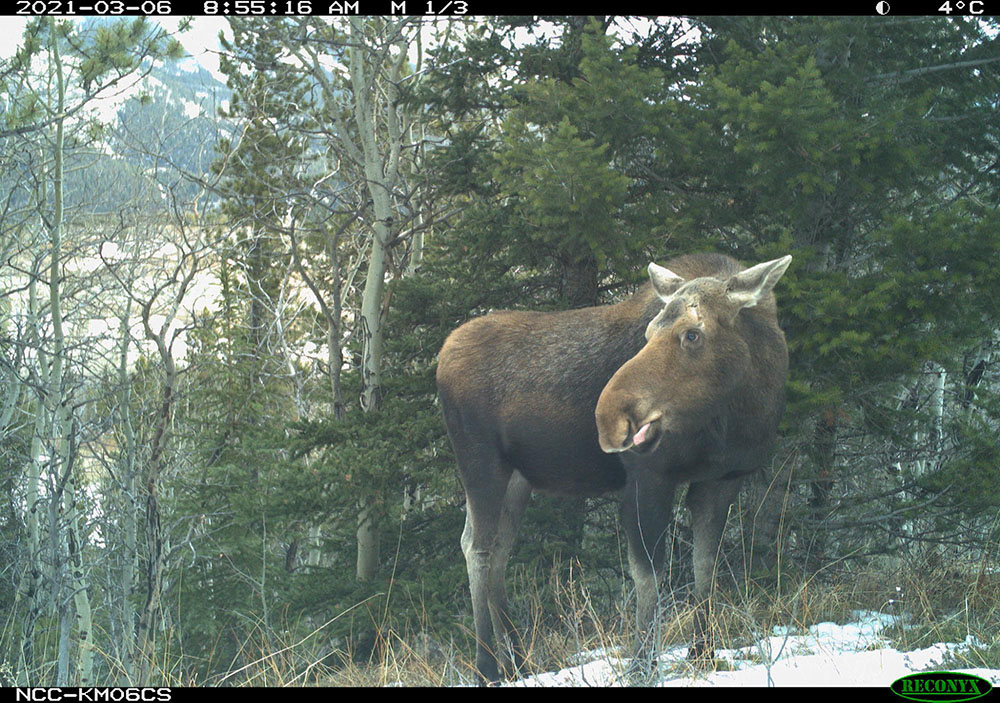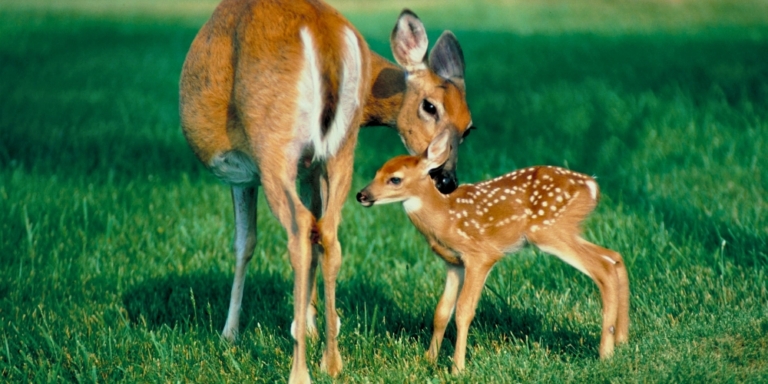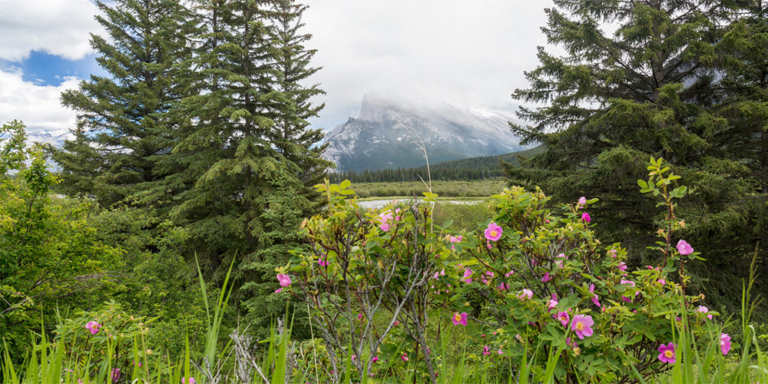A person and their dog had an unforgettable wildlife experience after an aggressive moose charged them in Kananaskis Country.
The wildlife interaction prompted wildlife officials to issue a warning for the West Bragg Creek day-use area and Long Distance Trail on May 17. According to the Alberta Parks website, the warning is still in effect.
In addition to a warning, Alberta Parks is asking outdoor enthusiasts to keep their dogs on a leash, keep their heads on a swivel, keep their distance and yield to moose on the trail, and never get between a cow and her calf.
Moose stay away from humans unless they are provoked. Unfortunately, man’s best friend, dogs, have a knack for royally pissing off wildlife.


The provincial government’s website states that moose will go out of their way to kick at barking dogs because they are annoying. Seriously.
Dogs are also a source of stress for moose and can distract them from making an otherwise easy exit from a yard, for example.
Dogs also resemble wolves, which are moose’s main predators. The details of the latest moose encounter in K-Country are limited, but there are a couple of possible explanations for the unwanted interaction.
Moose are the largest members of the deer family, standing up to seven feet tall. Female moose weigh over 830 pounds on average, while mature males weigh over 1,000 pounds.
Despite their massive size, moose are very good at moving quietly through forests and camouflaging in the surrounding trees.
However, moose tend to prefer wide trails, access roads, and fields where they have more freedom to move around.
If the moose was on the trail, the person and their dog should have been able to spot it. It’s possible they approached the moose or stopped to take a photo.
The presence of a dog may have agitated the moose and caused it to charge the pair.
Another possibility is that they were simply in the wrong place at the wrong time and accidentally crossed paths with the moose.
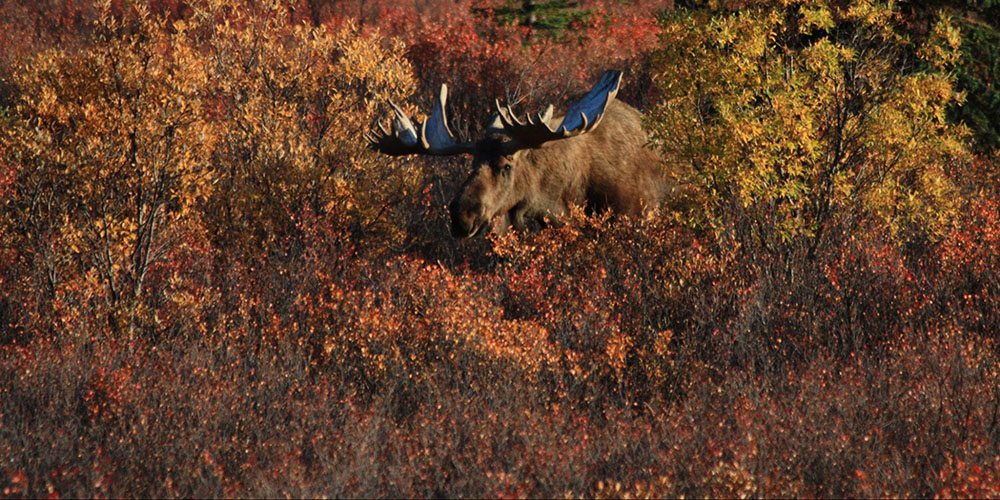

The Importance Of Keeping Dogs On A Leash
As is the case with most dangerous wildlife encounters, aggressive moose encounters in the wild often involve the presence of at least one dog.
In the winter of 2015, an off-leash dog chased a young bull for over half an hour near Chester Lake in K-Country.
Before the encounter, a conservation officer was called to the area after getting reports of a young moose licking vehicles like they were moose-sized popsicles.
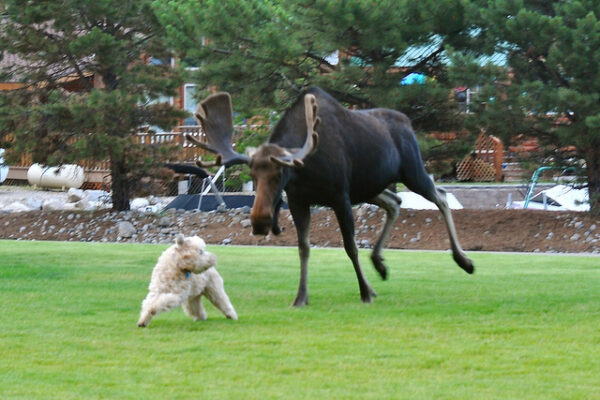

The officer tried to gently shoo the moose away but was unsuccessful. That’s when an off-leash husky began chasing the moose.
“An animal being chased for 35 minutes in winter is quite a concern because of the stress to the animal, and long chases can have serious consequences on the animal’s health,” K-Country conservation officer Arian Spiteri told Rocky Mountain Outlook.
The husky wasn’t the only pup-etrator—when Spiteri was there, there were two other off-leash dogs in the Chester Lake parking lot.
The husky’s owner was slapped with a $115.00 fine and evicted from provincial parks for 72 hours.
Keeping your dog on a leash is especially important when female moose are out and about with their calves, generally anytime between mid-May and early June.
Like any good mother, female moose will risk life and limb to protect their young. If you stumble across a calf alone, never approach it because the mother is likely nearby.
If she senses that you are too near her calf, she may defend them and act aggressively, especially if a dog is involved.
Leaving calves alone is a general rule of thumb for practically all wildlife, not just moose.
Cochrane recently warned residents to give deer fawns a wide berth and keep their dogs on a leash.
Whether or not the dog involved in the latest moose encounter was on or off leash could explain the moose’s aggressive behaviour.
@imnotsoanonymous And of course its the 6 pound #chihuahua thats making poor choices 🤦♀️ #tiny #dog #alaska #moose #dumb #chihuahuastiktok #home #nature #wildlife #alaskalife #chihuahuas
♬ original sound – ImNotSoAnonymous
How To Avoid A Moose Encounter
Moose are generally friendlier and more peaceful than bears, but you are more likely to be attacked by a moose because there are so many of them.
Alberta’s estimated bear population is about 41,000, including 1,000 grizzly bears and 40,000 black bears.


By comparison, our province’s moose population is about 118,000, which is almost triple the number of bears. More moose means you have a greater chance of running into one.
Still, moose encounters are very rare and fatal encounters are even rarer. Most moose encounters involving injury take place on the road.
According to Parks Canada, roughly 500 road accidents happen yearly due to moose collisions with cars. For this reason, moose are considered the most dangerous animal in Canada.
The best way to avoid a collision with a moose on the road is to be mindful of the moose rutting season and adjust your driving habits accordingly.
The moose rut occurs from late September to mid or late October, and moose are most active during the day and night.
Outside the rutting season, moose are most active during sunrise and sunset. You should always be on the lookout for yellow wildlife warning signs and slow down in these areas.
If you spot a moose while driving, brake firmly and avoid swerving. Do not honk at the moose to scare it because the animal is more likely to charge at your car than run away.
Read the animal’s warning signs if you encounter a moose on a trail. Signs of an agitated moose include neck and back hairs standing up, ears going back, snorting, and lip licking.
If a moose charges you, run for your life! A moose is unlikely to chase you; if it does, it won’t last long.
If you can’t run, hide behind something solid like a car or a tree. If a moose knocks you down, curl up in a ball, protect your head with your arms, and keep still.
Moose tend to mind their business but aren’t afraid to dish out a moose knuckle sandwich if they view you as a threat.
While aggressive moose encounters are rare, giving wildlife space is always important. A nice photo or keeping your dog off leash is not worth the risk.
